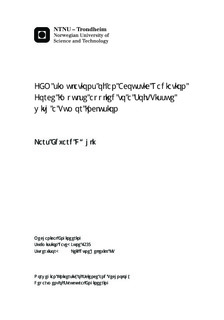| dc.description.abstract | The elastic stiffness properties of soft tissues can be estimated by the use of locally induced displacements and shear waves. In this work, we have made a two-dimensional plane strain finite element model to simulate a soft tissue with a stiffer elastic inclusion. The soft tissue was subjected to an acoustic radiation force impulse. The elastic inclusion represents a potential tumor within the healthy tissue. We have used a tissue-mimicking gel-agar phantom to represent the viscoelastic material properties of soft tissue and calibrated a three-element Maxwell model based on stress relaxation data from an experiment carried out on the gel-agar phantom. The calibrated Maxwell model was verified in a finite element simulation of the stress relaxation test. The acoustic radiation force generated by a focused linear array transducer was determined from an ultrasound pressure field simulation. A three-element Gaussian function was fitted to the resulting acoustic radiation force field and implemented as a body force in the finite element model. From the finite element analyses of the soft tissue with an inclusion, we found that the applied body force induced a local axial displacement in the focal region, which gave rise to a shear wave propagating away from the region of excitation. Based on the time dependent axial displacement profile in the focal region and the shear wave propagation through the heterogeneous tissue, we have examined three different ways of estimating the elastic stiffness: (i) using the shear wave speeds; (ii) using shear wave reflection factor values; (iii) using the time to peak displacement in the focal region. We found that the shear wave speed was accurately ($<0.15$ \% deviance) represented in the soft tissue and could be used to estimate the elastic stiffness in this region. However, the shear wave speed in the tumor was dependent upon the size and shape of the tumor, which resulted in unreliable stiffness estimates. The shear wave reflections from the tumor were rather complex and the reflection factor was highly dependent upon the shape of the tumor. Also, we must know the elastic stiffness value of the healthy tissue in advance, since the shear wave reflection only provides information about the relative stiffness difference between the healthy tissue and the tumor. Thus, this method may be used to locate an inclusion, but cannot be used to quantify the stiffness of neither the surrounding tissue nor the inclusion. The time to peak displacement was inversely related to the stiffness and independent of the load magnitude, which is favorable for medical imaging application. However, the time to peak displacement was dependent upon the impulse time of the applied load and can only be directly related to the elastic stiffness for a perfectly Gaussian ultrasound beam. Also, limitations of the pulse repetition frequency can make it difficult to detect the peak displacement.The results in this thesis indicate that stiffness estimation methods based on shear wave speed measurements are most reliable. | nb_NO |

